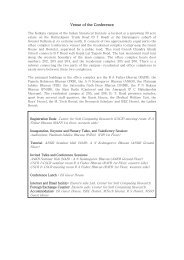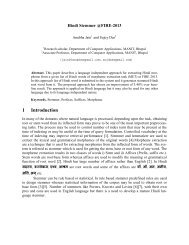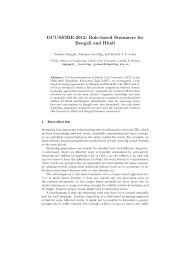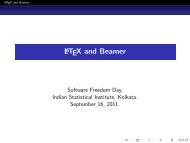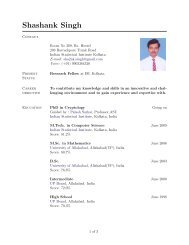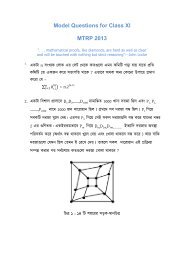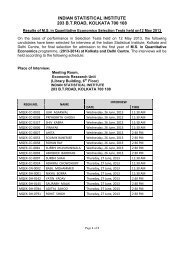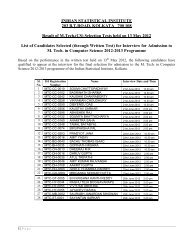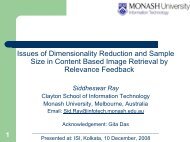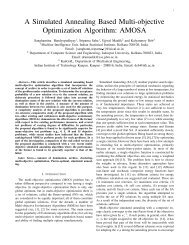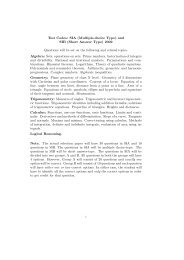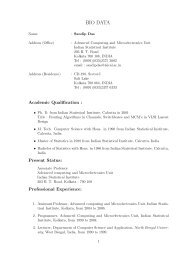Test Codes: SIA (Multiple Choice Type) and SIB (Short Answer Type ...
Test Codes: SIA (Multiple Choice Type) and SIB (Short Answer Type ...
Test Codes: SIA (Multiple Choice Type) and SIB (Short Answer Type ...
Create successful ePaper yourself
Turn your PDF publications into a flip-book with our unique Google optimized e-Paper software.
(A) ∫ b0 2x[f(b) − f(x)]dx (B) ∫ b02x[F (b) − F (x)]dx(C) ∫ b b 3 −x 30 3g(x)dx * (D) ∫ ( )b b 30 3 − x2 g(x)dx13. Let f be the function f(x) = cos x − 1 + x22 . Then(A) f(x 0 ) = 0 for some x 0 > 0,(B) f(x 0 ) = 0 for some x 0 < 0,(C) f(x) is an increasing function on the interval (−∞, 0] <strong>and</strong> decreasingon the interval [0, ∞),(D) f(x) is a decreasing function on the interval (−∞, 0] <strong>and</strong> increasingon the interval [0, ∞). *14. Let P, Q, R <strong>and</strong> S be four statements such that if P is true then Q istrue, if Q is true then R is true <strong>and</strong> if S is true then at least one of Q<strong>and</strong> R is false. It then follows that(A) if S is false, then both Q <strong>and</strong> R are true.(B) if at least one of Q <strong>and</strong> R is true, then S is false.(C) if P is true, then S is false *(D) if S is true, then both P <strong>and</strong> Q are false. *15. If cos B cos C + sin B sin C sin 2 A = 1, then △ABC is(A) isosceles, but not equilateral * (B) right angled *(C) equilateral(D) scalene16. LetThen1 2 + 2 2 + · · · + n 2α = limn→∞ n 3 ,(1 3 − 1 2 ) + (2 3 − 2 2 ) + · · · + (n 3 − n 2 )β = limn→∞n 4 .(A) α = β, (B) α < β, (C) 4α = 3β, (D) 3α = 4β.17. Let x 1 , x 2 , . . . , x 100 be hundred integers such that the sum of any fiveof them is 20. Then(A) the largest x i equals 7.(B) the smallest x i equals 3.(C) x 17 = x 83 . *(D) the average of all the numbers is 4. *18. Let x be a positive real number. Then(A) x 2 + π 2 + x 2π > xπ + (x + π)x π . *13



